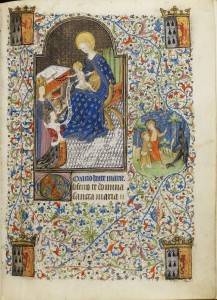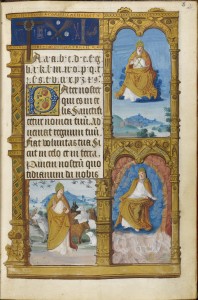Infrared reflectography plays a very similar role to the more commonly used near-infrared imaging. Both methods help to investigate the presence and appearance of underdrawing, pentimenti and retouched or heterogeneous areas. Infrared reflectography, however, is capable of recording a wider range of wavelengths, allowing for even greater penetration of many pigments which are opaque to near-infrared light. Examples of infrared reflectograms are included in some of the hotspots for the Primer of Claude of France (MS 159) and the Hours of Isabella Stuart (MS 62, fol. 20r).
Most of the cameras used for infrared reflectography, including the one we employed, are relatively low resolution. As a result, paintings or illuminations must often be recorded in small areas and the images joined together to give a full picture (called an infrared reflectogram mosaic).
Our infrared reflectograms were captured with an InGaAs air-cooled camera with a 640x512 pixels sensor (Photonic Science), equipped with a 50 mm Stingray lens. Illumination was provided by one or two lamps fitted with low voltage 35W SoLux bulbs (colour temperature 4700K, beam-spread 36°). Exposure times were adjusted for each image individually.


